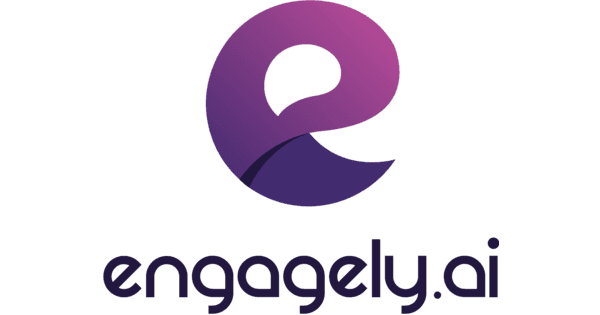In today's competitive business landscape, organizations are increasingly turning to 360 degree feedback software to drive performance, enhance employee development, and foster a culture of continuous improvement. These software solutions streamline the feedback collection and analysis process, providing valuable insights from multiple perspectives. Here are the top 10 360 degree feedback software options available:
Trakstar

- Pros: Improves overall efficiency between performance reviews, employee engagement, and talent development.
- Cons: Limited customization options for the feedback process.
- Pricing: Trakstar Pricing
- Website: Trakstar
PerformYard

- Pros: Customizable and flexible software to build out your perfect 360 degree feedback process.
- Cons: The interface can be overwhelming for new users.
- Pricing: PerformYard Contact
- Website: PerformYard
Primalogik

- Pros: Customizable 360 degree feedback software with additional tools for deeper performance analysis and continuous feedback.
- Cons: Advanced features may require additional training to fully utilize.
- Pricing: Primalogik Pricing
- Website: Primalogik
ClearCompany

- Pros: Best automated 360 degree feedback software for analyzing peer reviews and feedback.
- Cons: Some users find the reporting capabilities to be less robust compared to other platforms.
- Pricing: ClearCompany Contact
- Website: ClearCompany
Qualtrics 360

- Pros: Comprehensive feedback platform with a user-friendly interface and advanced analytics.
- Cons: The learning curve for using the platform effectively can be steep.
- Pricing: Qualtrics 360 Pricing
- Website: Qualtrics 360
Spidergap

- Pros: User-friendly 360 degree feedback tool with comprehensive reporting and development tracking.
- Cons: Integration options with other HR tools may be limited.
- Pricing: Spidergap Pricing
- Website: Spidergap
EchoSpan

- Pros: Feature-rich 360 degree feedback software with flexible assessment options and comprehensive reporting.
- Cons: The user interface could benefit from a more modern and intuitive design.
- Pricing: EchoSpan Contact
- Website: EchoSpan
BambooHR

- Pros: HR software that includes a 360 degree feedback feature, enabling organizations to gather feedback and assess competencies.
- Cons: The 360 degree feedback feature may lack some advanced customization options.
- Pricing: BambooHR Pricing
- Website: BambooHR
PeopleGoal

- Pros: Comprehensive performance management software with 360 degree feedback capabilities.
- Cons: Detailed pricing information not provided in the public domain.
- Pricing: PeopleGoal Contact
- Website: PeopleGoal
Engagely

- Pros: Employee engagement and performance management software with 360 degree feedback functionality.
- Cons: The software may lack certain advanced features offered by competitors.
- Pricing: Engagely Contact
- Website: Engagely
These software solutions offer various features such as customizable assessment templates, real-time analytics, performance tracking, and comprehensive reporting. Evaluate your organization's specific requirements and budget, and choose the software that aligns best with your goals and culture. The right 360 degree feedback software can play a crucial role in driving performance, improving employee engagement, and fostering continuous growth within your organization.
Please note that the logos are subject to change, and you should verify the logo URLs from the respective websites if you require the most up-to-date versions.
What are the benefits of running a 360 degree feedback process?
Here's a list of benefits of running a 360 degree feedback process:
- Holistic Assessment: 360 degree feedback provides a comprehensive view of an individual's performance by gathering feedback from multiple perspectives, including managers, peers, subordinates, and even customers or external stakeholders. This well-rounded assessment offers a more accurate and holistic understanding of strengths, areas for improvement, and blind spots.
- Self-Awareness: 360 degree feedback helps individuals gain a better understanding of their own strengths and weaknesses. It promotes self-awareness and provides insights into how one's behaviors and actions impact others in the workplace. This awareness is crucial for personal and professional development.
- Development Opportunities: By identifying areas for improvement, 360 degree feedback enables individuals to focus on their development needs. It helps in setting specific goals and creating personalized development plans that target the identified areas, fostering continuous growth and improvement.
- Enhanced Performance: With a clear understanding of their strengths and development areas, individuals can make targeted efforts to enhance their performance. The feedback received from various sources helps them gain a better understanding of how their actions impact team dynamics, collaboration, and overall performance.
- Promotes Feedback Culture: Implementing a 360 degree feedback process fosters a culture of feedback and open communication within the organization. It encourages regular feedback exchange among team members and promotes a continuous learning environment.
- Fair and Objective Evaluation: The multi-rater nature of 360 degree feedback ensures a more balanced and fair evaluation. It reduces bias and provides a broader perspective on an individual's performance, as feedback comes from different levels and angles within the organization.
- Identifies Skill Gaps: 360 degree feedback helps in identifying skill gaps and areas where additional training or support may be required. This information is valuable for designing targeted training and development programs to enhance skills and capabilities.
- Strengthened Relationships: The feedback received through a 360 degree feedback process can strengthen working relationships. It opens up channels for dialogue and fosters better communication among team members, leading to improved collaboration and teamwork.
- Succession Planning: 360 degree feedback aids in identifying high-potential employees and preparing them for future leadership roles. It helps organizations identify individuals who demonstrate strong competencies and leadership skills, supporting effective succession planning.
- Engagement and Retention: Providing employees with the opportunity to participate in the feedback process demonstrates a commitment to their development and growth. This, in turn, enhances employee engagement and satisfaction, leading to increased retention rates.
Implementing a 360 degree feedback process can have a profound impact on individual growth, team dynamics, and overall organizational performance. It provides a well-rounded perspective, promotes self-awareness, and fosters a culture of continuous learning and improvement.
Frequently asked questions (FAQs) about 360 degree employee feedback
🤔 What is 360 degree employee feedback?
360 degree employee feedback is a process that involves gathering feedback on an individual's performance from various sources, including managers, peers, subordinates, and sometimes external stakeholders. This multi-rater approach provides a comprehensive assessment of an individual's strengths, weaknesses, and areas for development.
🌟 Why is 360 degree feedback important?
360 degree feedback is important because it offers a broader and more accurate perspective on an individual's performance. It helps individuals gain self-awareness, identifies blind spots, and promotes continuous learning and improvement. It also fosters a culture of feedback and enhances collaboration within the organization.
👥 Who should participate in the 360 degree feedback process?
Typically, participants in the 360 degree feedback process include the individual receiving feedback (the subject), their direct manager, peers, subordinates, and sometimes even external stakeholders such as clients or customers. The specific participants may vary based on the organization's structure and goals.
🔒 How is confidentiality maintained in the feedback process?
Confidentiality is crucial for the success of the 360 degree feedback process. To ensure anonymity, feedback is usually collected and aggregated by a third-party software or HR personnel. Individual responses are often combined and reported in a way that prevents identification of specific raters, ensuring honest and candid feedback.
💪 What are the benefits of using 360 degree feedback?
Some benefits of using 360 degree feedback include gaining a holistic assessment of an individual's performance, promoting self-awareness, identifying development opportunities, fostering a feedback culture, reducing bias, and supporting succession planning. It can also enhance teamwork, communication, and overall organizational performance.
📢 How should feedback from a 360 degree process be delivered?
Feedback from a 360 degree process should be delivered in a constructive and supportive manner. It is essential to focus on specific behaviors and provide actionable suggestions for improvement. The feedback should be discussed in a confidential and respectful setting to encourage open dialogue and understanding.
🌟 How can individuals make the most of their 360 degree feedback?
To make the most of 360 degree feedback, individuals should approach it with an open mindset and a willingness to learn and grow. They should carefully review the feedback, identify common themes, and reflect on their strengths and areas for improvement. Creating a development plan and seeking support and resources can further enhance their growth.
⏰ How often should organizations conduct 360 degree feedback assessments?
The frequency of 360 degree feedback assessments varies based on organizational needs and resources. Some organizations conduct them annually, while others choose to do them less frequently. The key is to strike a balance between giving individuals enough time to work on their development areas and maintaining momentum for growth.
🚀 How can organizations ensure the effectiveness of 360 degree feedback?
Organizations can ensure the effectiveness of 360 degree feedback by providing proper training to participants, ensuring the confidentiality of feedback, using reliable software tools for data collection and analysis, promoting a culture of feedback, and aligning feedback outcomes with individual and organizational goals.
❓ Can 360 degree feedback replace traditional performance appraisals?
360 degree feedback is a valuable complement to traditional performance appraisals, offering a broader perspective on an individual's performance. While it provides insights into interpersonal skills, teamwork, and leadership abilities, traditional appraisals often focus more on individual job performance and goal attainment. Combining both approaches can provide a well-rounded evaluation of an individual's performance.
360 degree feedback is a powerful tool for personal and professional development. By leveraging insights from multiple perspectives, organizations can foster a culture of growth, enhance performance, and drive success.
Additional HR Software Resources
Performance Management Systems in 2023: Understanding the Value
10 Leading HRIS Systems for 2023: A Comprehensive Overview and Analysis
Why you need an HRIS in 2022: Top 10 reasons
10 Tips for effective performance reviews from industry exprerts
What is organizational development? Structure and process
Written by Sarah Thompson👩
Sarah is a highly experienced HR writer and consultant with over 15 years of industry expertise. Known for her ability to simplify complex HR concepts, Sarah provides clear and concise content that empowers organizations to develop effective people strategies. With a strong background in talent acquisition, employee engagement, performance management, and HR policy design, she offers tailored recommendations and practical solutions to optimize organizational effectiveness. Sarah's thought leadership, published articles, and consulting work have made her a respected figure in the HR community. Her passion for mentoring aspiring HR professionals and giving back to the community reflects her commitment to workforce development and empowerment.
